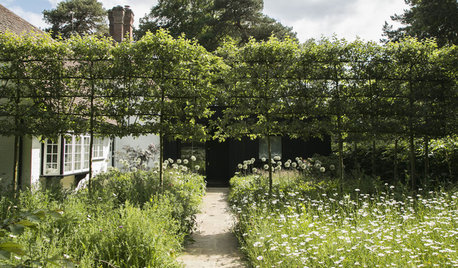black walnut trees harmful to apple trees etc????
jeanwedding. zone 6
11 years ago
Featured Answer
Sort by:Oldest
Comments (28)
beeman_gardener
11 years agoglib
11 years agoRelated Professionals
Wrentham Landscape Architects & Landscape Designers · Horsham Landscape Architects & Landscape Designers · Manhattan Beach Landscape Architects & Landscape Designers · Forest City Landscape Architects & Landscape Designers · Alamo Landscape Contractors · Bainbridge Island Landscape Contractors · Cockeysville Landscape Contractors · Davidson Landscape Contractors · Pleasant Grove Landscape Contractors · Royal Oak Landscape Contractors · Santa Ana Landscape Contractors · Stony Brook Landscape Contractors · Tigard Landscape Contractors · Eastlake Landscape Contractors · Crowley Landscape Contractorsbulldinkie
11 years agofusion_power
11 years agoalan haigh
11 years agoalan haigh
11 years agocanadianplant
11 years agoglib
11 years agocanadianplant
11 years agoblackrag
11 years agoglib
11 years agobeeman_gardener
11 years agocanadianplant
11 years agoglib
11 years agoolpea
11 years agoalan haigh
11 years agoglib
11 years agocanadianplant
11 years agoglib
11 years agoalan haigh
11 years agocanadianplant
11 years agoglib
11 years agoalan haigh
11 years agofruitmaven_wiz5
11 years agoalan haigh
11 years agoglib
11 years agoalan haigh
11 years ago
Related Stories

EDIBLE GARDENSHow to Add an Apple Tree to Your Edible Garden
Readily available, beautiful and fragrant, apple trees offer four-season interest along with crisp, juicy fruit
Full Story
GARDENING AND LANDSCAPINGCrab Apple Trees Set Off a Stylish English Courtyard
A structure of pleached crab apple trees, bordered by a wildflower meadow, links a minimalist addition to an old house in Buckinghamshire
Full Story
GARDENING GUIDESPlant Black Cherry Trees for the Birds and Bees
Plant Prunus serotina in the Central and Eastern U.S. for spring flowers, interesting bark and beautiful fall color
Full Story
GARDENING GUIDESHow to Keep Your Citrus Trees Well Fed and Healthy
Ripe for some citrus fertilizer know-how? This mini guide will help your lemon, orange and grapefruit trees flourish
Full Story
FALL GARDENING11 Trees for Brilliant Fall Color
Give your landscape the quintessential look of autumn with the red, orange and yellow leaves of these standouts
Full Story
HOLIDAYSChristmas Tree Decorating the Painless Way
Holidays are for carols, not cussing. Make tree trimming less work and more fun with this guide at your side
Full Story
ARBOR DAY8 Reasons to Plant a Great Tree
Beauty is its own reward, but the benefits of planting the right tree in the right place go way beyond looks
Full Story
FALL GARDENING6 Trees You'll Fall For
Don’t put down that spade! Autumn is the perfect time for planting these trees
Full Story
LANDSCAPE DESIGNThe Unparalleled Power of Trees
Discover the beauty and magic of trees, and why a landscape without them just isn't the same
Full Story








canadianplant